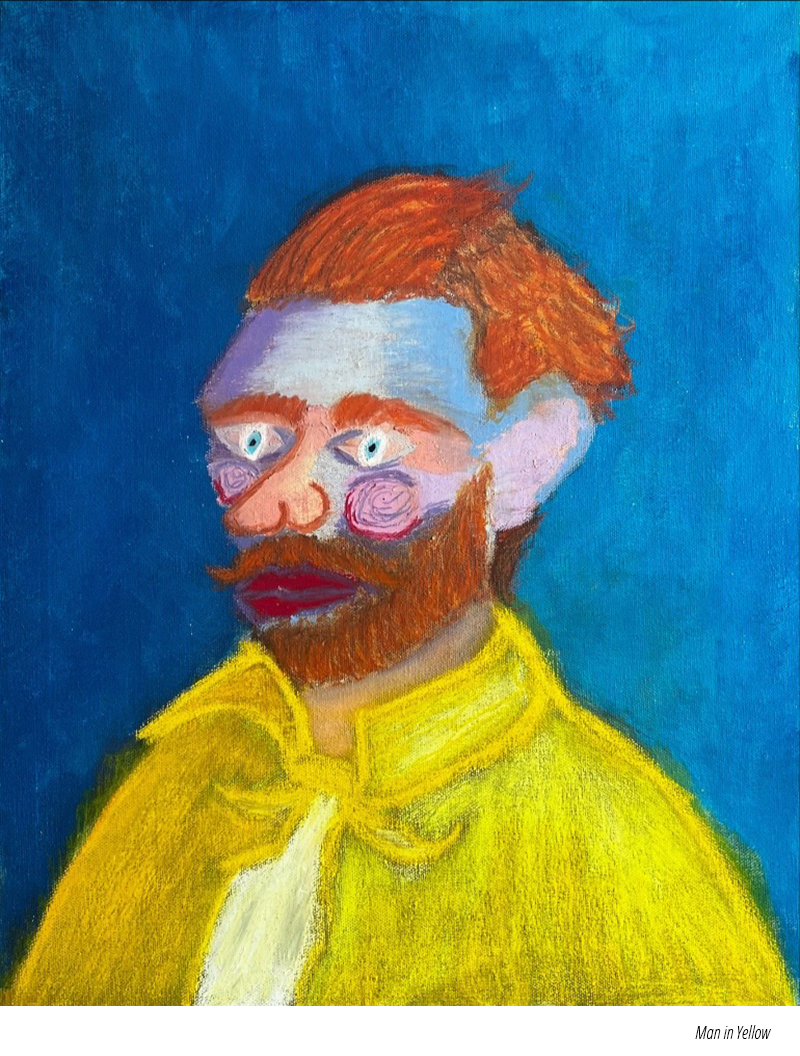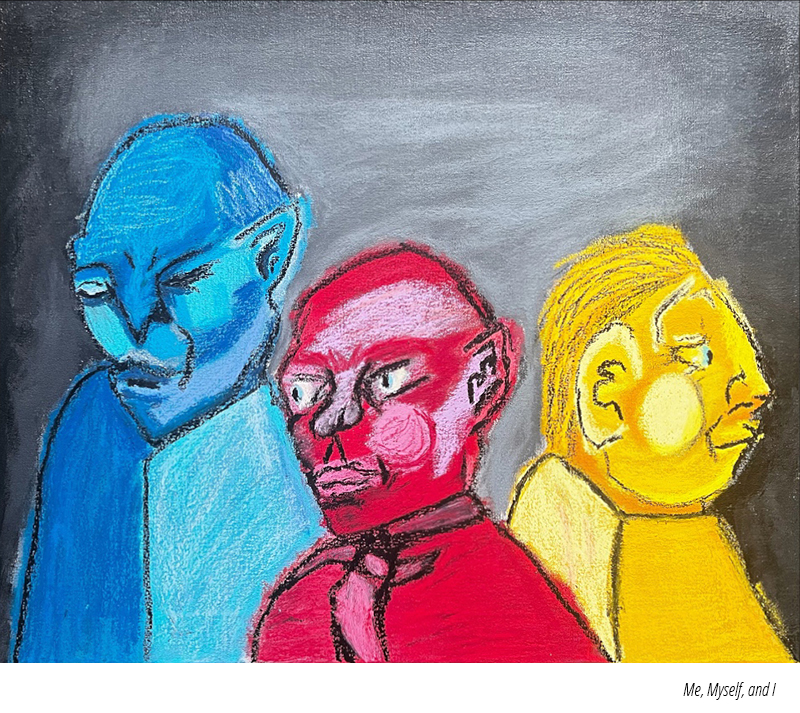
Tell a little bit about how you first got into creating art.
I got into art when I was very young due to my love for Cartoon Network. I used to trace different cartoon characters and then try to draw them from memory. After that, I got into playing the guitar and skateboarding when I was a teen. Skateboarding gave me a whole new perspective of the world, whereas guitar made me start to really listen and focus. Both of them helped shape who I am today as an artist and a person.
What artists or movements have had an impact on you?
Some of my biggest art influences are Ed Templeton, Mark Gonzales, and George Condo. Ed Templeton and Mark Gonzales are both skateboarders and artists. They were the first inspiration for me because they were the most relatable and shared a similar love for skateboarding and art. George Condo was introduced to me through later studies, and I was completely hooked. I was truly enamored by his style and the way he pulled from many great artists to create something refreshing for the art world.

The themes that I work on are identity and humor
What themes does your work involve?
The themes that I work on are identity and humor. Being in my mid-twenties, identity is the common dilemma everyone my age deals with. While trying to find myself, I tend to take on whatever I surround myself with. I feel like a chameleon who just hasn’t mastered blending in.
What is important to you about the visual experiences you create?
My goal is to draw out a reaction from the audience. Whether that be positive or negative, art can invoke many different emotions for different people. I also try to be very ambiguous with my titles so that the audience can form their own interpretation. By doing this, I get to hear ideas or concepts that I have not considered before.

I take my inspiration from many different avenues — people walking by, social media, nature, hearing songs, architecture, street art — simple observation
Do you work from memory, life, photographs, or from other resources? Describe your creative process.
I take my inspiration from many different avenues – people walking by, social media, nature, hearing songs, architecture, street art – simple observation. I treat my brain like a sponge and absorb everything around me. I then use my memory/whatever my brain is fixated on to influence what I create.
My creative process can be described with one word: manic. I don’t work on art all day everyday but instead attack a piece whenever I feel a mood. Then once I start, I become fully submerged and blackout my surroundings. I also don’t usually work from reference but go into a piece blind and head on. Whatever mistakes may come, I embrace them with open arms.
What do you consider the role of an artist today?
The role of any artist today should be to help engage our audience to think and see in different ways. Artists provide a sense of meaning and reaction to human life.
To quote Ernst Ludwig Kirchner, “A painter paints the appearance of things, not their objective correctness, in fact he creates new appearances of things.”

